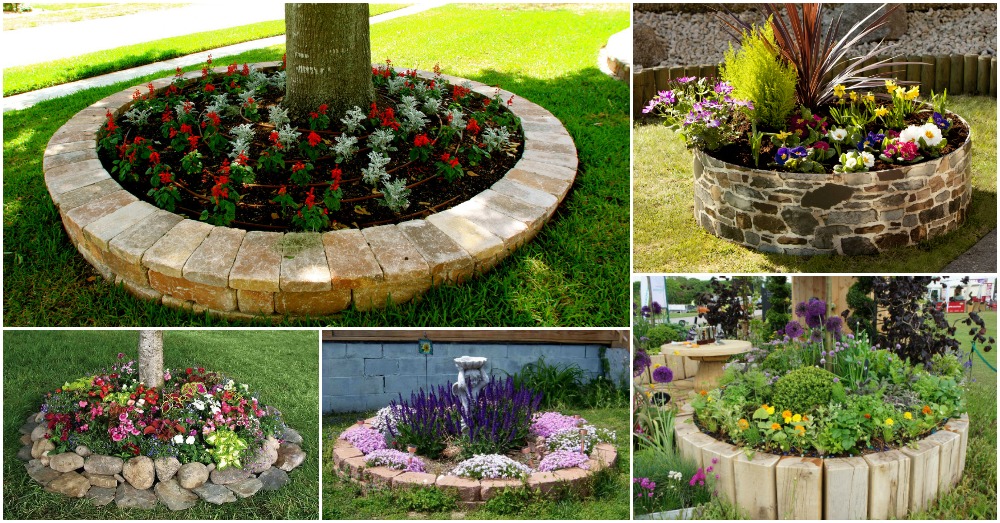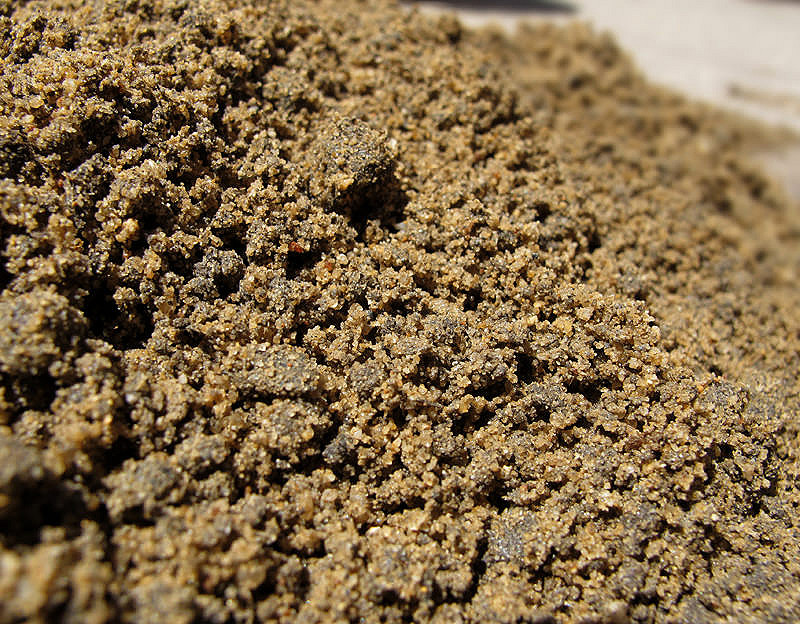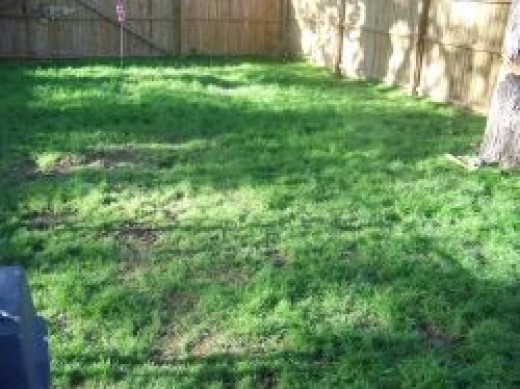Weeds love bare patches, so if you don't act quickly, they will. Spring's cool, wet weather is conducive to growing many types of turfgrass. Start by digging up the damaged section, plus 6 inches of surrounding, healthy lawn, cutting about 2 inches deep. Then level the soil and add a small amount of soil amendment, such as a plant-based compost, and starter fertilizer. If you're using seed, cover it lightly with straw and keep the ground moist until germination. For sod, which is about 10 times more expensive than seed but tends to work better, cut a section to fit, press it into place, and water frequently until it takes root.
This nutrient-rich material serves to moderate the hardness of the mineral component. When the soil is predominantly clay or sand, the addition of organic matter makes clay soil looser, and easier to work. In clay soils, organic matter additions improve drainage, and allow air to move into the soil more readily.
In sandy soil, it helps to hold moisture and nutrients in the root zone of the lawn. Organic matter has the magical quality of being able to help both soil problems. If you want to know what it looks like, buy a bag of compost at a garden center. High-quality composts are predominantly organic matter. Gypsum is easily applied to the soil surface with a regular lawn spreader. It's an ideal amendment for improving soil structure and relieving compaction in existing lawns and gardens.
At the opposite end of the scale from sandy soil are clay soils. These hold water and nutrients very well but don't drain as well as sandy soils, especially if compacted, a common situation for lawns with a clay soil base. Clay's potential as one of the best soil types for plant growth lies in its unique properties. Managed well, clay soil typically requires less irrigation and less fertilizer, and leads to healthier plants all around. Amending the soil used to backfill planting holes provides questionable benefits. If any soil amendment is done in the planting hole, provide for a gradual transition of soil types .
If the backfill soil is drastically different from the existing soil, roots will not readily penetrate the soil around the planting hole. Significant textural differences in soil can also affect soil water movement. If the container growing mix is high in peat and the surrounding soil is clay, water will tend to move out of the root ball.
Excessively wet root zones may result when the tree's or shrub's root ball is high in clay content and the backfill soil contains a high level of organic matter. When planting trees and shrubs, always dig generous planting holes shallow and wide. The hole should be at least twice the width of the root ball or the container in which the plant is growing and no deeper than the root ball of the tree or shrub to be planted. Soil loosened below the root ball will settle over time, creating a planting depression that will accumulate excess water.
In heavy clay soils, planting trees and shrubs a few inches above the grade of the surrounding soil is preferrable. In extreme cases, mound planting is preferable, as it can help with root development above existing compacted soil. Ideal soils for lawns have a loose structure to allow water, air, and nutrients to penetrate through them. Soil that contains too much clay will pack down, making it difficult for the plants to spread their roots and access much-needed moisture. Soil that contains too much sand becomes very loose and allows too much water to flow through, without allowing the plants time to absorb the moisture.
Unlike manufactured fertilizers, organic matter releases nutrients slowly into the soil, keep it nourished for long periods of time. A good lawn soil also includes an element that aids with moisture retention and keeps the plants well hydrated. Soils with a high composition of sand barely hold together and feel gritty. The larger particles create pores for water and nutirents to move through quickly.
They tend to be nutirent deficient, fast draining and dry. High sand soils will need watering and fertilizing more often. Sandy soils are very well drained, and sometimes excessively so.
The angular shape of the particles creates lots of air space so that water passes through the soil quickly. In general, roots thrive in sandy soils, because they get the oxygen they need to grow well. Another advantage is that sandy soils hold their shape well, and resist compaction. Golf course greens and professional sports fields are heavily sand based. They require compaction resistance and rapid drainage to maintain a firm, safe playing surface. A high clay soil holds on to nutrients, stays wet longer, and is slow to warm up and dry off in spring.
These soils are slimey and can be formed in your hand when wet. Avoid working high clay soils when wet – this leads to compaction. Clay soils are made of extremely small particles that are packed close together. When lawns growing on clay soils receive even moderate foot traffic, the particles mash together in what is known as compaction. There is little room for water and air, because the voids are reduced. The limited space tends to fill up with water after a rainfall, leaving little or no oxygen for the root system.
Water does not pass quickly through clay soils, and often will move downward only after the soil voids are completely saturated. For centuries people have been adding things to poor soils to improve their ability to support healthy plant growth. Some of these materials, such as compost, clay and peat, are still used extensively today.
Many soil amendments also add nutrients such as carbon and nitrogen, as well as beneficial bacteria. Additional nutrients, such as calcium, magnesium and phosphorus, may be augmented by amendments as well. This enriches the soil, allowing plants to grow bigger and stronger. The most common use of soil amendments is to improve soil structure. Soil compaction impedes root growth, decreasing the ability of plants to take up nutrients and water. Soil amendments can add more loft and texture to keep the soil loose.
Many patchy lawns suffer from compacted soil, which deprives grass roots of needed oxygen. Removing plugs of soil with a core aerator allows air and water to penetrate the ground and leaves space for surrounding soil to expand and loosen. Plan ahead and reserve the core aerator for at least half a day for an average-size lawn. You'll need a truck or trailer to haul the core aerator home.
The machine weighs 150 to 200 lbs., so it takes some muscle to move around. If you're not up to the task, consider hiring a lawn service for this part of the job . Allow a day between aerating and seeding to let the soil plugs dry. Dry plugs will break up easier when you blend them in along with the dressing of topsoil. Clay, silty and sandy are three other common soil types and the right combination of them makes up loamy soil. Sandy soil particles are large which causes water and nutrients to drain too quickly out of the soil.
When doing your soil jar test, sandy soil will be the first layer to settle at the bottom and should make up 40% of the jar's soil. Since sandy particles are heavier, you'll begin to see that layer a few minutes after you set the jar down to settle. It's easiest to see all the layers if you mark each layer as they settle. Silt will settle on top of the clay particles and usually looks darker in color.
Your silt layer will settle in about 4-5 hours and should make up around 40% of your soil. Clay soil has tiny particles which creates poor drainage in the soil if you have too much of it. Since clay particles are the smallest of the three soil types in your jar test you'll see the layer on top. You should also have some trace amounts of organic matter floating just over the clay layer or at the top of your jar. Breaks apart clay bonds to create microscopic air space deep into the clay.
It also adds liquid organic matter to help generate and feed beneficial soil microbes of all types at the same time. It helps improve drainage in your lawn clay, encourages deeper rooting, frees up nutrients and water in the root zone and helps move organic matter deeper into the soil. By improving clay conditions you can create a much healthier lawn in a more bioactive soil. To help nature along, as long as we exercise diligence, we can intervene in this process to help the soil support healthy, vigorous plant growth. We do this by using soil amendments to improve the soil's physical qualities, usually its fertility and sometimes its mechanics.
Soil amendments are most commonly used to improve soil structure, nutrients, and water retention. In addition to incorporation into the soil, applying organic matter as mulch is beneficial for many flowers, vegetables, trees and shrubs. Top-dressing of lawns may be done with good topsoil or topsoil–organic material combinations to smooth out irregular areas in the lawn or help decay thatch. Next, gently squeeze the ball to lengthen it into a strip or 'ribbon' and see how long you can make it before it starts to break up. The more clay it contains, the longer the ribbon will get and the more plastic it will feel to the touch.
Soil ribbons can range in length from about 5mm – 75mm, with sandy soils being shortest, loamy soils in the middle and clay soils the longest. While soils that contain a lot of clay or sand may need work to improve them, loamy soils are generally ideal. These contain a mixture of sand, silt, organic matter and clay, providing the right balance of nutrients, oxygen, water and drainage which are just what your lawn needs.
Foot traffic and lawn machinery can compact the soil under your lawn, creating a difficult environment for grass roots and soil microbes. Air passages in the soil are necessary in order for water, air and nutrients to move down into the root zone. To loosen hard, compacted soil, you can use a hand-held or machine-powered aerator to remove small cores of soil. You can also strap on a pair of aerator sandals and walk around your yard.
Spikes on the bottom of the sandals create tiny passageways for air and water. Avoid future compaction by minimizing foot and machinery traffic, or by creating permanent walkways. Unfortunately, there is no quick fix to change clay into perfect soil.
What we focus on is changing the soil structure, rather than try to change the type of soil. You improve the soil structure by breaking up the compacted clay and adding organic material. This gives the clay something useful to bind to, and it is a material that combats every problem that clay causes. The organic material will improve drainage, resist compaction, and both holds and releases nutrients and water. The best sandy soil amendments are ones that increase the ability of the sandy soil to retain water and increase the nutrients in the soil as well. Sandy soils can usually benefit from the addition of organic material, such as well rotted manure or compost which will help the soil to retain both moisture and nutrients.
Incorporating 2 inches of organic material into the top 6 inches of the soil before seeding will significantly improve the texture of soils with a high sand content. You can revitalize it in a weekend using just one or two tools from a local rental or garden center. The power core aerator loosens any compacted soil in your yard and breaks up thatch. Thatch is a cushion of old, partially decayed grass roots and stems that develop in many sodded lawns. It separates the actively growing crown of the grass plant from the soil surface. With the vegetation killed off, it's time to till the soil.
Turn over the soil to a depth of five or six inches, incorporating all of the dead organic material. Now is the time to add organic material like humus, manure, or organic compost. The added material helps loosen clayey or compacted soil or improve the water retention of sandy soil. Aerify PLUS breaks apart some of the clay bonds in the soil to create microscopic air space in the clay. It also adds liquefied Seaweed and Humic Acids to help generate and feed beneficial soil microbes of all types .
When soil problems exist under a lawn, there are ways to address them without tearing up the lawn. Core aerifying is suggested for problems such as thatch and soil compaction. Core aerifying machines will pull up numerous plugs of soil about the diameter of a pencil, making holes in the lawn.
Aerifying, overseeding, and slit-seeding may be an ideal level of renovation for many lawns. When soil problems exist, organic matter used as a topdressing can begin to rebuild soil structure. This becomes an important part of the reseeding process.
In these situations, core aeration should be done first, topdressing second. This allows organic matter direct access into the soil profile. Compacted soil is a terrible growing medium for lawn grass.
Soil can become compacted from foot traffic, vehicle traffic or poor soil composition—a clay-based soil for example. Compaction can be relieved by aerating and if the cause is poor soil, top dressing with a soil amendment. This relates to how the different soil particles are arranged, the aggregates they form and the spaces between them.
Well-structured soil will also have plenty of air spaces to provide oxygen, allow water to penetrate and facilitate drainage. Poorly structured soils are often hard and compacted, don't accept water easily, have few air spaces and are subject to erosion. In simple terms they're bad news for you and your lawn and need to be improved.

























No comments:
Post a Comment
Note: Only a member of this blog may post a comment.